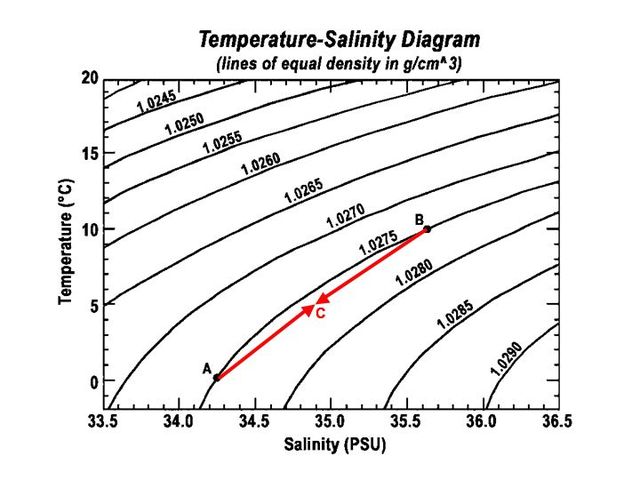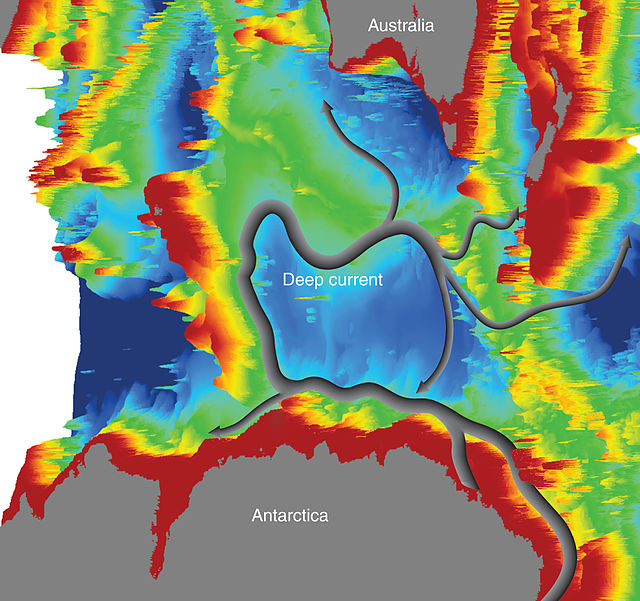Cabbeling is when two separate water parcels mix to form a third which sinks below both parents. The combined water parcel is denser than the original two water parcels.
Visualization of cabbeling in an example Temperature-Salinity diagram. Combining water masses A and B in equal proportions forms water mass C, which has a higher density than either A or B.
An ocean current is a continuous, directed movement of seawater generated by a number of forces acting upon the water, including wind, the Coriolis effect, breaking waves, cabbeling, and temperature and salinity differences. Depth contours, shoreline configurations, and interactions with other currents influence a current's direction and strength. Ocean currents are primarily horizontal water movements.
The bathymetry of the Kerguelen Plateau in the Southern Ocean governs the course of the Kerguelen deep western boundary current, part of the global network of ocean currents.
Coupling data collected by NASA/JPL by several different satellite-borne sensors, researchers have been able to "break through" the ocean's surface to detect "Meddies" – super-salty warm-water eddies that originate in the Mediterranean Sea and then sink more than a half-mile underwater in the Atlantic Ocean. The Meddies are shown in red in this scientific figure.
A recording current meter




